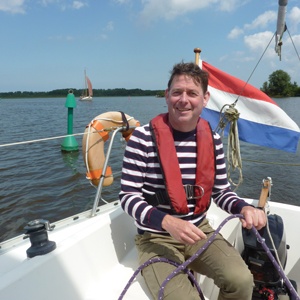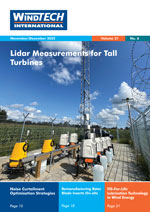 Year in review: resilience amid policy shifts and market realignment
Year in review: resilience amid policy shifts and market realignment
The past year has been defined by a widening policy divide between the USA and Europe, China’s continued dominance in wind manufacturing and deployment, and a renewed test of industry resilience in the face of regulatory uncertainty. What began with speculation about shifts in US federal energy policy has now materialised into a steady stream of restrictive measures, affecting both offshore and onshore wind development. At the same time, Europe has strengthened its long-term climate framework, while China has accelerated wind and solar deployment at a pace unmatched elsewhere.
In the USA, the new administration paused offshore leasing and ordered reviews of existing wind projects early in 2025. Executive orders, shortened tax credit timelines, and tighter eligibility for federal support programmes created uncertainty for developers. The Empire Wind 1 stop-work notice in April, although later lifted, exemplified the broader challenges, as several projects were delayed, downsized or cancelled. Offshore wind has been the most affected, while onshore projects face indirect impacts through permitting, trade constraints, and grid limitations. Tariffs on turbine components and import investigations have added further complications.
Europe has taken a different path. The European Commission reinforced its 2040 emissions reduction target of 90% and introduced the Clean Industrial Deal, combining climate goals with industrial funding. Member states were urged to accelerate permitting, expand grids, and commit to long-term auction volumes. Germany demonstrated what streamlined regulation can achieve, permitting over 14GW of onshore wind in 2024. Practical barriers remain, including grid delays and uneven implementation of new rules, but the long-term policy direction is clear.
China has consolidated its position as the centre of global wind manufacturing and deployment. Developers installed a record 80GW of wind capacity in 2024, lifting Chinese turbine makers into the top three global positions. Goldwind alone added 20GW, and domestic policies, including the shift to auction-based pricing, continue to shape market behaviour. Outside China, installations fell nearly 10%, placing further pressure on Western manufacturers already restructuring operations and outsourcing production to stay competitive.
Across the USA, Europe and China, rising electricity demand is a clear trend. In the USA alone, demand is expected to increase by up to 50% by 2040, driven by data centres, electrification and industrial loads. That growth is outpacing the buildout of new generation and grid capacity, reinforcing the need for policy clarity and investment stability. The global wind sector has navigated similar periods before – tax credit expiration, supply chain shocks, and changing subsidy regimes – but the current divergence between major markets is sharper than in previous cycles.
If the past year has shown anything, it is that wind energy remains both vulnerable to policy intervention and capable of adapting to it. The fundamentals driving deployment – demand growth, falling costs, energy security, and decarbonisation – remain intact. The question for the years ahead is not whether wind will continue to expand but how unevenly that progress will be distributed across regions. Of course, we will keep you updated about these and other developments in our industry.
Enjoy reading,
Floris Siteur
Publisher/Editor-in-Chief










